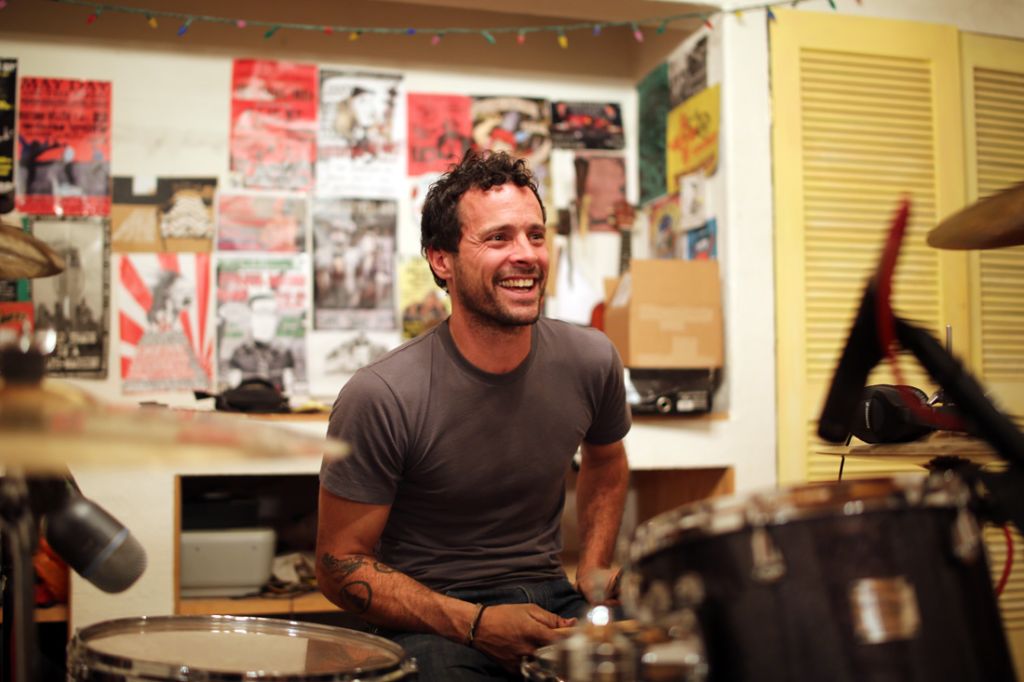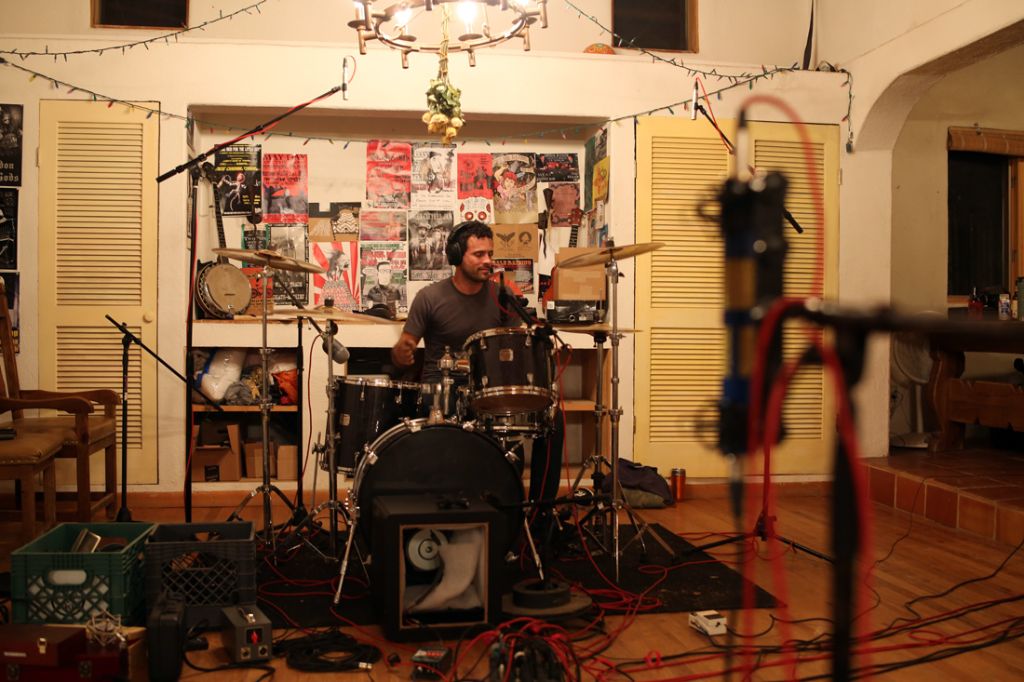I caught up with my buddy Lou Maiolica while he was on a short break from recording with his band, Article 15, here in Taos. An awesome drummer and plumber!, Lou has been traveling the world with Earthship Biotecture for the past several years, working as a plumber on their many construction projects. He and some friends recently left for Nepal, with a goal of teaching earthquake-resistant construction techniques to some of the local Nepalese residents.
Lou has a special place in his heart for the people of Nepal, and after the tragic earthquakes of April 2015, he was compelled to find a way to help. With friends, he developed The Nepal Earthbag Project.
Kevyn: Why do you care about Nepal?
Lou: I was there a couple years ago volunteering in a small village, and the way they treated me was just amazing. I lived in the village for about a month and volunteered and stayed with a family who hosted me. They were just so generous even though they had so little.
K: What brought you out there in the first place? Was this an Earthship thing?
L: No, I just volunteered. I wanted to go to India actually, and then a friend of mine told me about a volunteer program and I thought that would be great to volunteer and help out. This was before the earthquake — a few years ago. My friend and I went out together and we went through the volunteer program. I was pretty much just digging holes and building outhouses with them.
K: What’s the plan once you get there this time?
L: I kept in touch with the host family for a couple of years now and the plan now is to hopefully teach. We want to teach the locals how to build an earthquake-resistant structure because most buildings fell down there. The way they build is just cinder block, or some of it’s adobe brick. This method that we learned is an earth bag technique called Super-Adobe. It’s very cheap and easy to build. You just need somebody to show you how to do it. It’s basically soil, bags, and barbed wire. That’s all you really need to build this structure — you can pretty much do it anywhere. It’s a nice, safe structure.
K: Who’s going out there with you?
L: A couple of my friends. We had a company called Star Creations come out and train us on how to do these techniques here in Taos. We did two prototypes here in Taos. A few of friends of mine, Katie, Matt, Chelsey, and Griffin, we’re all going out there. We all met through Earthship pretty much. We built one on Katie’s land when we did the training. What we’re doing is building a 12-foot dome out there in Nepal.
K: When did you first come to Taos?
L: Five and half years ago. I did an Earthship internship in Baja, Mexico and they said they needed a plumber back home and asked me if I’d join them. They do a lot of humanitarian builds as well so that’s what struck my interest, mostly that, traveling and now teaching as well. I like to teach.
K: Have you ever been a project lead before?
L: No, this is the first time. Mostly my friend Katie and I are organizing the Nepal trip. Yeah, I’ve never done that before. I’m a plumber. (Laughs.)
K: How did you get into plumbing?
L: I went to school for heating and air conditioning, and after the first year the teacher had a heart attack and threw us all in plumbing. So I stuck with it. (Laughs.)
K: That’s not funny but …
L: Well, he didn’t die, he just … Yeah, it’s not funny, but I guess it’s fate or whatever.
K: What would it mean to you to have people contribute money to your GoFundMe campaign?
L: It would mean more to the people there than me or us.
K: Is the plan to build a series of 12-foot structures, or are you doing a training where you kind of build one as an example?
L: Right now it’s a training. We plan to stay in touch with them and see how it goes. You also have to be culturally sensitive. We see these domes and we’re like ‘these look cool.’ I guess it’s all the culture and what you’re exposed to –we’re going to see how receptive they are to it and train them.
We’re going to train some engineers out there as well. There’s an engineering school near the build, so we’re trying to organize for a few of them to come out and help. There’s actually another engineer who is studying in Albuquerque and planning to go to Nepal as well. I’m going to meet up with them as well, and maybe even train some of them here later in the year. We hope that we raise enough money to keep the project going. See who’s interested and see if we can get those engineers involved with the organization and to help fund them as well.
Whatever money we raise is all going to go to Nepal. We’re buying the tools and everything, and all of us bought our own plane tickets so far. We put a lot of time and our own money into the project and the training already. Hopefully we cover some of those costs, but mostly the money is going to go to Nepal.
K: Okay, then the more money you make, the more opportunity there is to keep the project going in some capacity.
L: Yeah, we want to. Someone is coming out to document the project and we’re going to post updates on Facebook. Every rupee we spend, we’re going to put up there so everyone knows what we spend and where it’s going.
K: Anything else that you think people should know about?
L: Two earthquakes happened, and landslides, and it’s out of the news now so it’s hard for people to care or even be aware when it’s not in the news anymore. When it was in the news, we saw donations coming in; now we’re not seeing anything, because there are other issues in the world. And there really are other issues all over the world — I’m not saying one is more important than the other. You decide for yourself what you want to do. We try to do as much as we can and then we hope there are people doing different things for different projects — that’s great, some people helping Syrian refugees and then some people helping Nepal. There are so many problems in the world that just can use help. We’re just one little grain in the sand.
get more info and Support the project:
The Nepal Earthbag Facebook page
A video about the project:
https://youtu.be/ziguX_Okx-I



